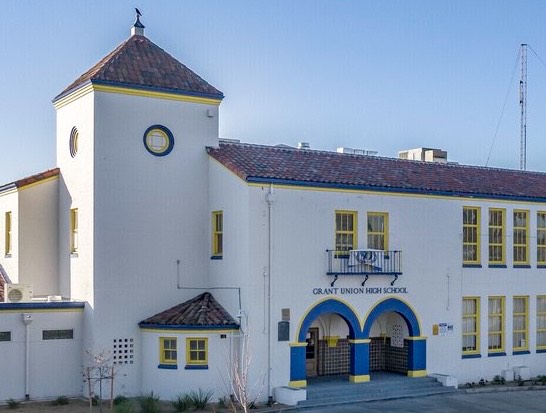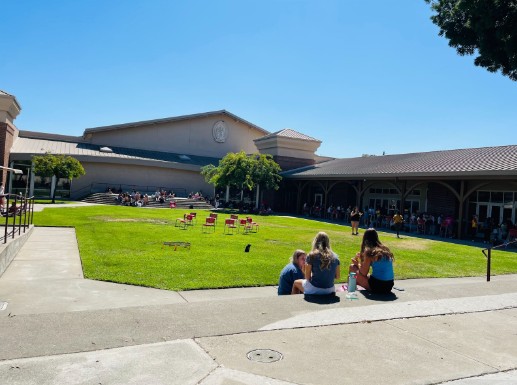While the presidential race may be top of mind for voters, many Sacramento-area residents will face a critical down-ballot decision this November – whether to approve hundreds of millions of dollars in school district bonds.
Large Sacramento school districts including Sacramento City Unified, San Juan Unified and Elk Grove Unified have all placed bond measures on the 2024 ballot, which will raise more for facilities improvements through a property tax increase.
If district-area voters approve the initiatives with the necessary 55% majority, local schools will get billions of dollars aiming to fix aging infrastructure at 70-year-old campuses. Some districts also plan to pursue larger development projects to bring new sports and academic facilities to schools.
While it is estimated Sacramento County schools need at least $10 billion in facilities improvements, the six regional bonds will, if passed, allow districts to make certain upgrades soon. Most bond measures collect funds from small property taxes, usually less than $60 for every $100,000 in value.
The money used, varied by each school’s needs, will go to common fixes – plumbing, electricity, pests – as well as modernization projects like constructing new classrooms to keep up with enrollment, building computer labs and expanding athletic areas. Districts are guided by a regularly updated Facilities Master Plan.
These key improvements have a range of positive effects on students and teachers, the districts say. Repairing air conditioning systems can make classrooms cooler and easier to work in, for example, while removing mold and asbestos reduces illness.
Sacramento City Unified
Sacramento City Unified’s $543 million Measure D, which will avoid a tax increase by extending previous bonds, aims to build more STEM labs, fix roofs and install solar panels at schools, according to the district. The plan also includes school safety improvements and arts facility expansions.
Large projects to be paid for by the bond consist of building a larger pool at McClatchy High School and upgrading the performing arts spaces at Hiram Johnson and John F. Kennedy high schools.
Schools like Earl Warren Elementary, Elder Creek Elementary, Miwok Middle, Rosa Parks Elementary/Middle, Will C. Wood Middle and Rosemont High are all due for renovations if the measure passes.
There are some critics of the bond measure’s necessity.
“We all want great and modern 21st century schools, and we also all want the most for our bond dollars,” said Nicholas Bloise, operations director for the Sacramento Taxpayers Association. “Our concern is how the bond dollars are being spent. From our perspective, it seems other school districts are getting more done for their teachers, students and staff as they have more efficient policies and procedures in place.”
Representatives from SCUSD and its facilities department did not respond to several requests for comment.
San Juan Unified
Dubbed the “Classroom Repair Measure,” San Juan Unified would get $950 million in bonds if a small property tax increase passes.
Measure P funds will go to roof and plumbing repairs, electrical work and safe water improvements. One of the main priorities of the initiative will be the removal of lead and asbestos from school facilities.
While the district will need at least $3.5 billion for long-term fixes, some of the money could be dedicated to larger projects like new athletic spaces and classrooms.
The last San Juan bond measure included a key project chosen by every high school – a new football field or a performance theater, for example.
“These improvements were made possible because of facilities bonds approved by local voters which funded the projects,” said Trent Allen, chief of staff for San Juan Unified.
Construction at various schools will take time as, unlike the other districts proposing bonds, SJUSD continues to update its Facilities Master Plan for renovation and modernization projects, district spokesperson Raj Rai said.
“We gathered community feedback through surveys and workshops and heard from students, families and staff about their vision for their school facilities,” Rai said. “The feedback and assessments are informing the updates to the (facilities) plan, which will be finalized in early Spring 2025. The plan will include project prioritization guidelines that we will apply moving forward, should funds and resources be available.”
The district also hopes that improvements from the initiative will make facilities more desirable for current and potential new teachers.
“By improving classrooms and teaching environments, Measure P can help San Juan Unified remain competitive during the current teacher shortage so that we can continue to attract and retain the quality teachers our students deserve,” superintendent Melissa Bassanelli said in a statement.
Elk Grove Unified
If a $542 million bond passes for California’s fifth-largest district, Elk Grove Unified might use the money differently – for the potential construction of new schools because of a projected increase in enrollment.
Beyond two to three more school sites, Measure N would put immediate funds toward better labs, school safety, maintenance and playground repairs. Another emphasis will be improving access to technology across the district.
Nearly $2 billion is needed for facilities improvements in the district.
Representatives from EGUSD and its facilities department did not respond to several requests for comment.
The Yes on N committee said that “our community is growing, not declining.” The measure will make progress on facilities needs but more will be necessary in the future, committee officials said in a statement.
Similar to the SCUSD measure, the Sacramento Taxpayers Association is Measure N’s only official opponent and remains adamant about its objections.
“You’ve heard it all before: the list of promises they say they will do with your money but why do they have to keep coming back time after time?” Bloise said.
Other smaller Sacramento-area districts have also placed bonds on the ballot, including Folsom Cordova Unified, which is seeking $144 million for basic repairs and vocational education facilities, as well as the Galt Joint Union Elementary School District, which would put $27 million toward repairs.







